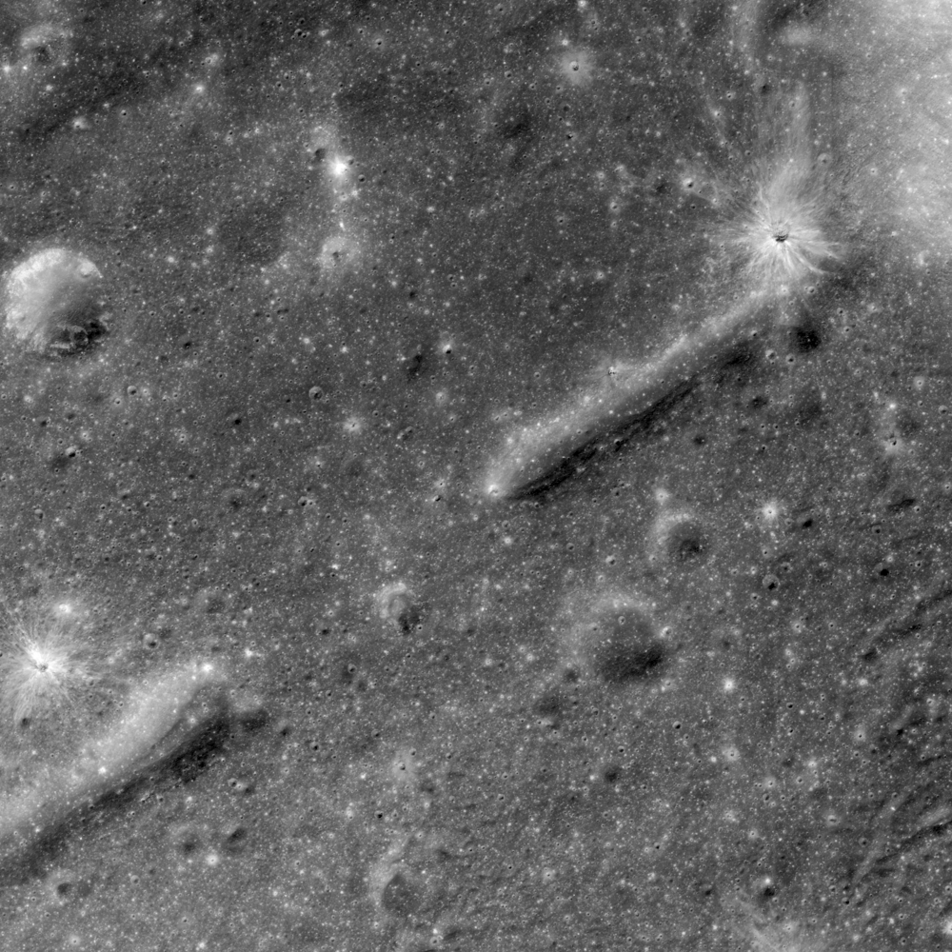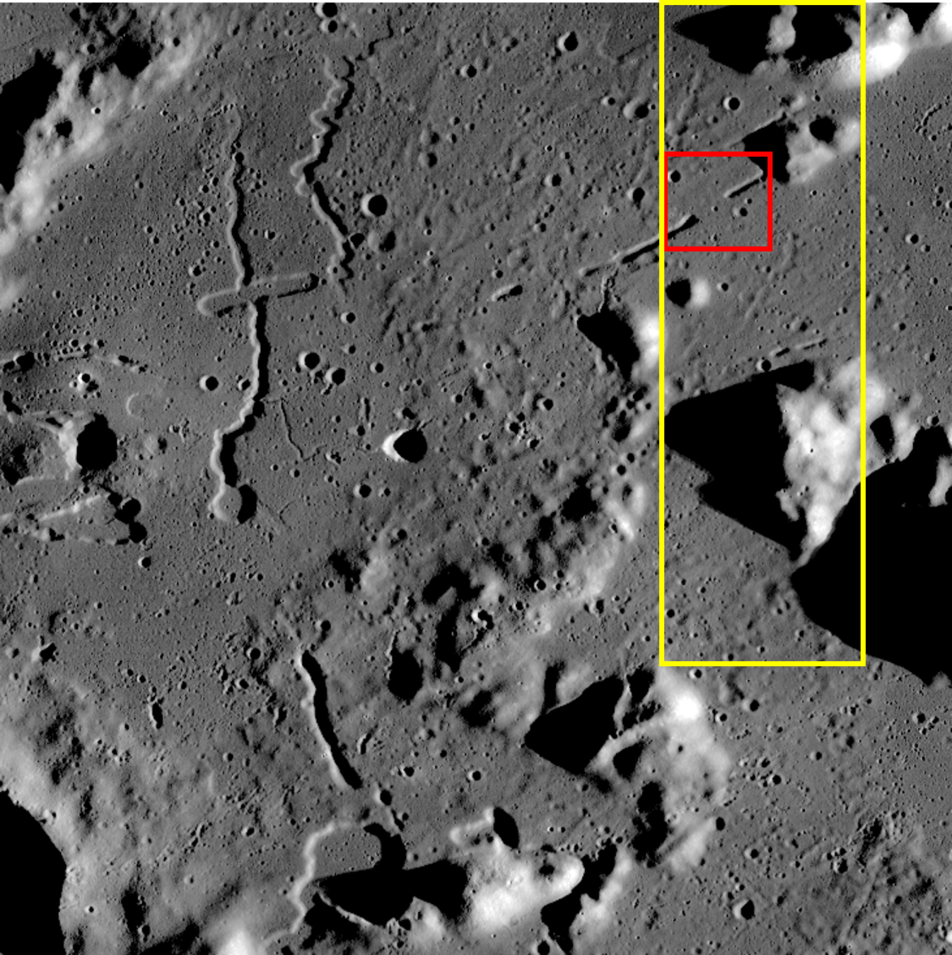
A lava tube is a volcanic conduit through which lava travels beneath the hardened crust of a lava flow. The presence of lava tubes on the Moon and beyond are inferred based on observations of terrestrial lava tubes, such as those found in Hawaii. Oftentimes, a rille suddenly disappears only to reappear a short distance away. These are called discontinuous rilles and are thought to be areas where a lava tube collapsed. Collapsed lava tube segments may provide access to the subsurface, which is exciting as a possible site to collect rock samples that remain unaltered due to surface weathering (radiation, thermal cycling, micrometeorite bombardment).

The lava tube from Today's Featured Image is located to the west of Montes Harbinger, a large kipuka in Oceanus Procellarum, and to the east of the Rimae Prinz region. The Rimae Prinz region displays exquisite sinuous rilles as well as other elongate depressions, indicating that there could be other lava tubes in the area. The entire region pictured above is of interest for exploration for several reasons. The diversity of volcanic landforms in the area can tell scientists much about the volcanic history of the Moon. By collecting samples from the surface and subsurface in this region and by careful mapping on-site, scientists can better characterize the diverse basaltic lava flows in terms of both age and composition, which also helps us understand the timing and evolution of lunar volcanism and possible heterogeneities in the lunar mantle. Any time a sample is taken from a site on the Moon and age-dated, it can also be used to calibrate crater densities that are currently used to remotely age-date surfaces in the absence of direct sampling (both on the Moon and other planets).
Lava tubes are of particular interest in terms of human exploration because they are not only scientifically valuable, but they might also provide shielding from the radiation that poses a hazard to future explorers. Furthermore, the region surrounding the lava tube from Today's Featured Image also hosts large pyroclastic deposits, which are a potential in-situ resource that will be critical to sustaining a human presence on the Moon. Scientists and engineers are looking into the possibility of using the natural structure of the lava tube and associated resources to our advantage to construct habitats for explorers.
Explore the full NAC mosaic here! How many features of interest do you see?
Related Posts:
Rimae Prinze Region - Constellation Region of Interest
Rilles as far as the eye can see in Prinz!
Marius Hills Pit - Lave Tube Skylight?
How Common Are Mare Pit Craters?
Diversity of Basaltic Lunar Volcanism
Published by H. Meyer on 5 November 2014